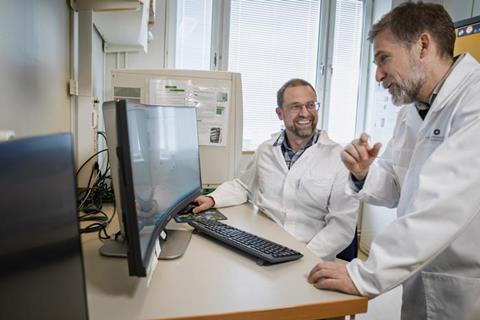Researchers at Umeå University, Sweden, have found another piece of the puzzle that explains why there are differences in immune responses in women and men when they get sick with COVID-19. This discovery has implications for treatment strategies for severe COVID-19.

“Although the total number of cases of diagnosed COVID-19 is similar for men and women, men are three times more likely to need intensive care. Our study contributes to understanding how this sex-related difference in severe COVID-19 arises,” says Johan Normark, infectious disease physician and senior lecturer at the Department of Clinical Microbiology at Umeå University and one of the researchers behind the studies.
READ MORE: Cellular evidence reveals why men are at higher risk from COVID-19
READ MORE: New research shows how testosterone may shield against severe Covid-19
COVID-19 is a respiratory infection caused by the SARS-CoV-2 virus. The disease was first detected during the coronavirus outbreak in Wuhan, China, in December 2019. The rapid, global spread led to the COVID-19 pandemic.
At least a third of those infected do not experience any symptoms. Of those who do, 80 per cent experience mild symptoms and 20 per cent experience severe symptoms that may require hospitalization and oxygen support. A small proportion of these becomes critically ill and requires intensive care.
Severe infections
Severe COVID-19 infections are characterized by an exaggerated and hyperinflammatory reaction of the immune system, especially in the lungs. The severe response can lead to tissue damage and, in the worst case, death. Part of the immune response to COVID-19 is the recruitment and activation of special white blood cells, called neutrophils. Their recruitment and activation occur primarily through the secretion of immune system signaling molecules, called cytokines.
The underlying mechanisms of why men are at risk of becoming more seriously ill with COVID-19 are not fully known.
To explore this, a translational project led by Professor Constantin Urban was started, in which several research groups from Umeå University collaborated with partners at the university hospitals in Umeå and Örebro. Translational research aims to take what is learned in basic research and apply it to the development of solutions to medical problems.
Markers in blood plasma
In the study, blood samples from over 200 Swedish patients with COVID-19 were analyzed. Using the samples, doctoral student Remigius Gröning mapped a comprehensive cytokine profile and doctoral student Emelie Backman quantified molecules that indicate neutrophil activation.
The results showed that in the samples from patients with severe COVID-19 and needing medical care, there were higher values of cytokines that recruit and activate neutrophils. In addition, there were higher values of neutrophil activation markers.
“We saw that the increase in the inflammatory cytokine IL-18 was sex-dependent and that the activation of neutrophils was sex-dependent. This was our most interesting finding! On average, both the amount of this cytokine and neutrophil activation markers were higher in blood plasma from men with severe COVID-19 compared to blood plasma from women of the same category,” says Constantin Urban. Excessive recruitment and activation of neutrophils can have fatal consequences and can lead to serious and life-threatening disease.
Differences in response
According to the researchers, the result is important because other studies are underway that aim to treat symptoms of severe COVID-19 by suppressing neutrophil activation and thus reducing tissue damage in the patients’ lungs.
“In order to further develop this treatment strategy, it is therefore tremendously important to precisely map the difference that occurs in neutrophil responses in men and women with severe COVID-19,” says Constantin Urban.
The study also highlights the complexity of the interactions that characterize the immune system’s response to viral infections and how these interactions can affect the severity of the disease. Neutrophils have previously been studied most in bacterial infections, but this study shows that they also play an important role in more severe viral infections.
In future studies, the research team intends to further delineate the molecular mechanisms behind the discovered sex-related differences in the COVID-19 response and to verify the results of the current study with larger patient groups.







No comments yet